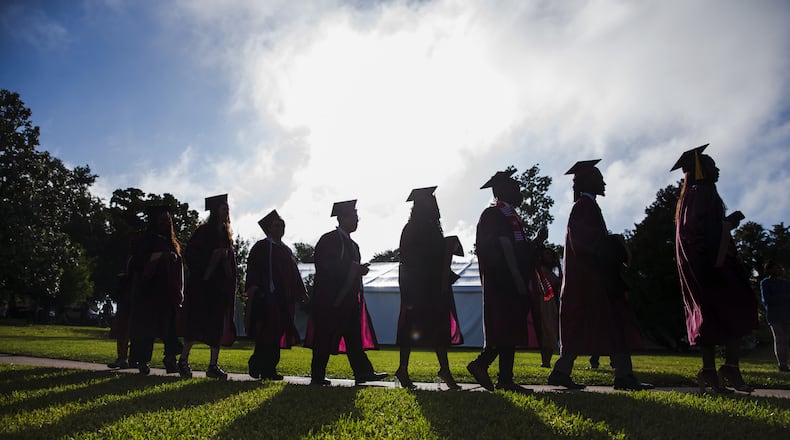This legislative session saw a clamor for wider school choice in Georgia, invigorated by the election of a supportive governor and lieutenant governor. With that new push came the inevitable declarations that children's futures shouldn't be dictated by their zip codes.
I wish it were true that zip codes determined destiny because that begets a simple fix; move students to a different zip code, whether through a charter school or a private school.
It’s not that simple, as educators have long told us. Too many children experience trauma and deprivation that follow them onto the bus to that new charter school or private religious academy.
Nationally, we've seen choice and voucher programs that pluck children from "failing" local schools and plunk them into supposedly better schools with no improvement in achievement. Yet, Georgia lawmakers still refuse to see that changing where a child goes to school won't matter if we don't change what a student brings to school.
A landmark 2018 study found family and home life are the most critical influences in a child's success. "If you want to forecast children's achievement outcomes, the best predictor is family income," said Robert Pianta, study author and founding director of the Center for Advanced Study of Teaching and Learning at the University of Virginia. "It is the family factors that carry the day."
So what does that mean for public policy? It demands a coherent and focused learning agenda that begins before kids arrive at kindergarten and that is sustained through college. It means addressing not only the child's academic struggles in school, but the family's struggles at home. This is not something schools can accomplish on their own.
We can't isolate children’s school performance from where they live, the medical care they receive, the income their families earn or the daily stresses they face. These systematic challenges must be dealt with across government agencies and community services in a new and intentional way.
"We spend a lot of time mapping the human condition," said the Atlanta Regional Commission's Mike Carnathan at last week's United Way's State of the Children event. "You can map health conditions, you can map education, you can map poverty, you can map housing affordability. It all looks the same. It is the same map."
Carnathan described the “tsunami of diversity” that has occurred in metro school districts in two decades. In 2000, almost half of the public school population was white. White students now represent 28% of enrollment. In 2000, about 12% of neighborhoods were considered high poverty, which means having a 20% poverty rate or more. Now, 28% of neighborhoods fall into that category.
In many of those impoverished communities, schools represent the one institution that is durable, so they've shouldered the burden of the demographic and economic shifts that have left families in disarray
"We have left a lot at the feet of our school systems — our responsibility for correcting generation upon generation of neglect in under-served communities. That's a bar too much for schools," said Ken Zeff, a former Fulton County School System leader now heading Learn4Life, a collaboration of the Metro Atlanta Chamber, the Atlanta Regional Commission, the Community Foundation for Greater Atlanta and the United Way of Greater Atlanta.
Learn4Life seeks to improve outcomes for the 606,992 students in the five core counties of Gwinnett, Fulton, DeKalb, Clayton and Cobb. Those districts have added 35,000 students over the last 5 to 10 years many of whom come from poor households where English is not the native language.
While many community groups have sought to help schools, there's been a lack of coordination of what UVA's Pianta described as "tons of these partnerships and one-off programs" unaligned to school programs, intermittent and not tied into curriculum and learning.
"We all need to row in the same direction," said Zeff. “These challenges are beyond just education, which is why they require community-level solutions. The strength of collective impact organizations like Learn4Life is to organize our energy and resources around a common set of goals to scale-proven solutions."
At a recent Learn4Life panel featuring local superintendents, Clayton Schools school chief Morcease J. Beasley said, "I am not looking for partners who come thinking they're coming to save a community. We are not looking for saviors. We are looking for people who understand that we benefited from a system and it is incumbent upon us, those who are privileged and benefited, to remove the obstacles so others can benefit."
About the Author
Keep Reading
The Latest
Featured



